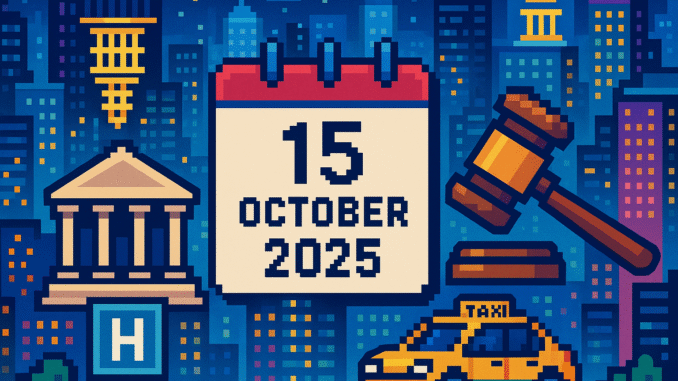
“A country that invents Colossus ought to fund its future.” Tech Brief 15 October 2025 brings you stories about the ongoing push-pull between British digital innovation and the realities of policy, hardware, and even medical discovery. Today’s round-up covers government indecision, an NHS leap into overseas tech hands, and the question of whether London’s streets are ready for robotic cabs.
Missed yesterday’s Tech Brief? Catch up here before diving in.
Government Urged to Accelerate Investment in UK Quantum Computing
A new round of committee hearsay has landed in Westminster. The Science, Innovation and Technology Committee heard witnesses who laid bare the risks facing the UK’s quantum computing ambitions. The message is blunt: without more government funding and urgency, Britain’s chance to lead in quantum computing could slip away in a haze of international competition.
This is hardly the first time Whitehall has been caught behind the curve. The same archives that document Sinclair’s rise hold plenty of warnings about what happens when vision is sacrificed for short-term financial logic. From Colossus during the Second World War to ARM cores powering generations of gadgets, Britain has a knack for inventing what others profit from. Quantum, for all its sci-fi mystique, follows the same script, but this time the committee is saying the quiet bit out loud.
A global race is on, with the US and China investing dizzying sums. The crossroad is obvious: if Britain delays, it risks repeating the ‘invent here, export success elsewhere’ routine. Is that what anyone actually wants?
Infosys Lands £1.2 Billion NHS Tech Contract as Digital Overhaul Ramps Up
A punchy number for your morning: Infosys, an Indian tech giant, will multiply its UK public sector revenue by approximately 16 times through a £1.2 billion NHS contract that dwarfs its previous deals. This marks a clear shift for the NHS, more willing than ever to entrust its digital backbone to an overseas supplier.
Let’s not get distracted by the PR. The NHS has a patchwork history of IT upgrades, from paper files to the infamous National Programme for IT meltdown. This contract puts a global operator at the heart of British healthcare’s transformation. Job security, data sovereignty, and user experience are already points of anxiety among staff and patients.
It is a sign, perhaps, of a broader recalibration of what “British-made” means in modern infrastructure. Considering the headaches of past NHS IT efforts, many will watch this one both nervously and with some hope. Could third time be the charm?
Waymo to Launch Driverless Taxis on London Roads in 2026
“Fairground ride,” grumbled a black cab driver overheard outside Euston. Waymo, the American autonomous vehicle leader, has announced its driverless taxi service will hit London next year. Safety drivers will be present at launch. For the city’s centuries-old taxi tradition, it is as if the Knowledge is being pitted against silicon once again.
This is not London’s first digital disruption, but the struggle between algorithm and intuition is now on four wheels. British cabbies memorise the fastest routes, while Waymo’s AI navigates by LIDAR, satellite, and code. Critics wonder if a robot cab really knows rush hour from rugby day.
Beyond the novelty, there is serious impact here. Will Londoners trade human conversation for silent algorithms? Will regulators keep pace? The debate is already messy. Maybe that is healthy. Disruption rarely asks permission.
From the Wayback Machine
On This Day: 1956 – IBM Releases the First FORTRAN Reference Manual
Fifteen October 1956 saw IBM publish a manual for the FORTRAN automatic coding system, a 60-page guide that unlocked new horizons for programmers working on the IBM 704 mainframe. FORTRAN, short for “formula translating system,” made it easier to write scientific and technical software without needing to wrestle with low-level assembly commands. The FORTRAN manual formalised this new era of programming. Within months, researchers and engineers were flocking to this more approachable way of commanding computers. Much of today’s high-performance scientific computing, including UK weather modelling and engineering software, still owes a direct debt to that document.
What This Means
Sometimes, Tech Brief 15 October 2025 is not about gadgets, but about continuity and contest. Britain’s old problems persist in new hardware and contracts. The big question: Will future retrospectives celebrate UK innovation, or log another missed opportunity? Your comments and corrections genuinely welcome.
Sit with a cuppa and see if your street memory still beats a robot. Old skills need not fear new tools.
Missed yesterday’s Tech Brief? Catch up here

Leave a Reply